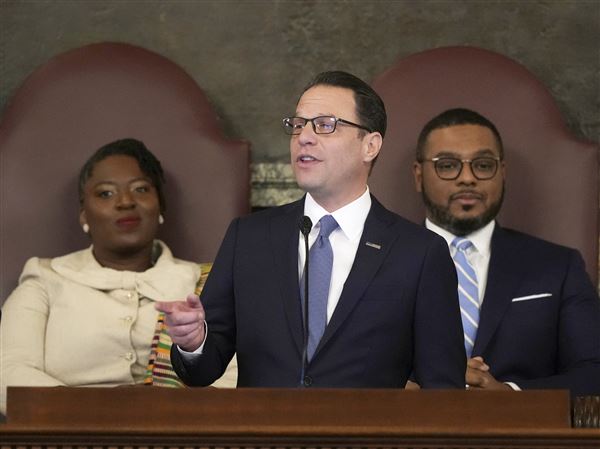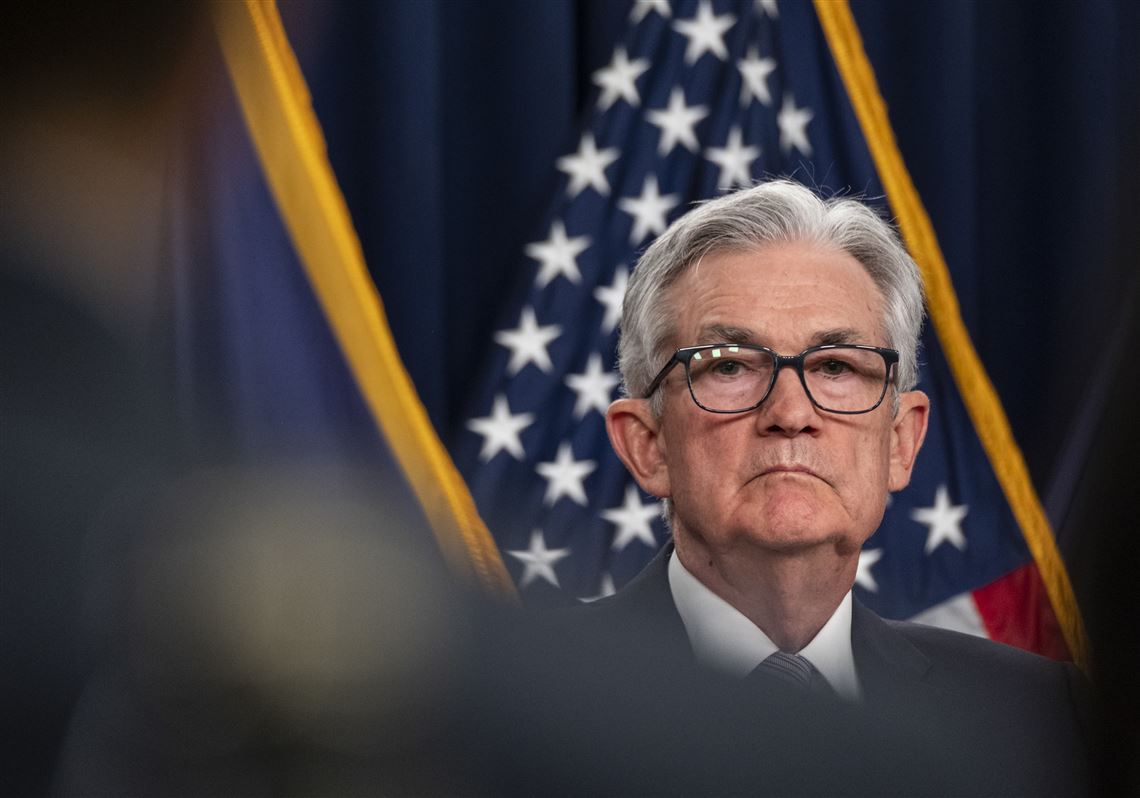When the Federal Reserve’s top policymakers gather around their grand boardroom this week, the economy will be running surprisingly well, thanks to easing inflation, a robust job market and consumer spending that’s still driving growth.
But outside the Fed’s marble headquarters, many Americans would tell a different story: That grocery bills still cost too much. That they still fear a recession or losing a job. That the economic whirlwind of the last few years is wearing them down.
Getting Americans to feel better about the economy isn’t the job of central bankers. But officials don’t make their decisions in a vacuum. And increasingly, the Fed’s challenge is to find a message that makes clear all the work it has done to stabilize prices without a sharp crash — while also acknowledging that many people aren’t feeling a difference.
“There’s something that’s wedged in. People became more pessimistic early in the pandemic, and that stayed with us,” said Claudia Sahm, founder of Sahm Consulting and a former Federal Reserve economist. “We haven’t made up that lost ground, for whatever reason. And yet, there aren’t clear signs, when you go out in the economy, in terms of what stuck.”
That’s the backdrop central bankers are confronting during their two-day policy meeting, which started Tuesday. After scrambling to hoist borrowing costs over the past 18 months, policymakers are now moving at a slower pace so they can see what’s happening with prices, jobs, wages, consumer spending and growth. That means they haven’t raised interest rates at every meeting this year, and that officials could decide to stop hiking but keep pressure on the economy by leaving borrowing costs at a two-decade high.
The widely held expectation is that the Fed will hold rates steady when it wraps up its meeting on Wednesday, leaving the federal funds rate at a level between 5.25 and 5.5 percent, where it’s been since the July meeting. More attention will go to a fresh set of economic projections, also set to be released Wednesday afternoon, showing what officials expect for inflation, the job market, economic growth and interest rates over the next few years.
“Given how far we have come, at upcoming meetings we are in a position to proceed carefully as we assess the incoming data and the evolving outlook and risks,” Fed Chair Jerome H. Powell said in a closely watched speech last month.
In broad strokes, the Fed has reason to feel encouraged. Inflation has come down significantly since last summer’s peak, even though it has edged back up in recent months. The energy shock that followed Russia’s invasion of Ukraine has abated. Rates are high enough to meaningfully slow the economy and quell demand for all kinds of loans and investments.
The job market is still growing and at a more sustainable pace. Wages are outpacing inflation. Consumers are still spending big and the economy does not appear to be barreling toward a recession, which typically happens when rates rise so quickly.
But that optimism isn’t matched in national surveys and polls. Nearly half of registered voters in a Fox News poll released Friday said economic conditions today are “poor"; another third said they are “only fair.” Additionally, 54 percent said grocery prices are a “major problem” for their family, which was little changed since last summer. When it came to other strains on the budget, 49 percent said gas prices were a major problem, down from 67 percent last summer; and 42 percent said utility costs hit hard.
The latest snapshot from a University of Michigan consumer sentiment survey also showed that while peoples’ expectations for the economy improved this month, consumers are still “relatively tentative about the trajectory of the economy.” They also noticed the “stalling slowdown in inflation,” though they expect more progress is coming, according to the Michigan survey.
Mary Daly, president of the San Francisco Fed, pointed to the dizziness of the past few years to explain why the gloom still cuts through. Travels across her district, which spans California and eight other Western states, routinely reveal that “the mental stress of working through this high inflation environment for so long is just taxing,” she told The Washington Post last month.
First, prices shot up at a breakneck pace. Then people had to adjust to a baseline price level — on everything from eggs to car insurance — that’s much higher than it was a short time ago. And looking ahead, people fear that everything will change once again. The roller coaster makes it that much harder for the Fed to explain why its push to tame inflation is working. Ms. Daly described one conversation with a worker who said he could “handle anything as long as it isn’t changing constantly.”
“‘It’s okay that eggs are more expensive,‘” Ms. Daly said the worker told her. “‘I can live if it just doesn’t go up again. It’s the keep-going-up that breaks me.‘”
Changing peoples’ minds about the economy is more of a political challenge, especially as President Biden kicks off a reelection campaign and Republicans fight to pick apart his record. The Fox News poll showed that 61 percent of voters disapproved of Mr. Biden’s handling of the economy, and 37 percent approved — more negative than his overall ratings.
Yet Justin Wolfers, a professor of public policy and economics at the University of Michigan, noted a wrinkle in downtrodden survey results: how to square what many people say about the economy with what they are actually doing. If people were so worried about their own finances or the economy’s future, they would probably stop spending.
That paradox matters to the Fed, Mr. Wolfers said, as policymakers try to make sense of what is happening in the economy — and keep their own credibility intact.
“The Fed targets what’s actually happening, not feelings. Feelings matter to the extent it affects economic variables. There’s not much evidence of that right now,” he said. “Still, it’s important because the Fed is in the business of communicating with the broader public, and they need to understand what the public feels.”
First Published September 19, 2023, 3:44pm
















